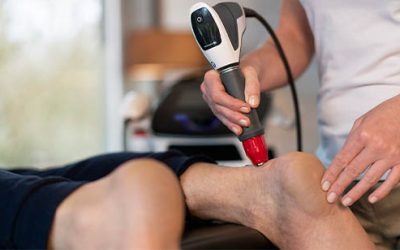Chronic back and neck pain affects millions of people worldwide, often stemming from conditions such as herniated discs, sciatica, or degenerative disc disease. In the search for relief, two common non-invasive options are traditional traction and non-surgical spinal decompression therapy. While these methods may appear similar at first glance, they differ in approach, technology, and effectiveness.
Let’s explore how spinal decompression therapy and traction work, the science behind each method, and what makes spinal decompression treatment a preferred choice for long-term relief.
Understanding Traditional Traction
Traction therapy has been used for decades to help stretch the spine and relieve pressure on spinal structures. It involves applying a consistent pulling force to separate the vertebrae, aiming to reduce nerve compression and improve mobility.
There are two main types of traction:
- Manual Traction: A therapist applies force by hand to stretch the spine.
- Mechanical Traction: A machine uses a steady pull to stretch the spinal column.
While traditional traction can offer temporary relief for some patients, its effects are often short-lived. Because the pulling force remains constant and doesn’t adjust in response to muscle resistance, the body may react by tightening up—limiting the overall benefit.
What Is Spinal Decompression Therapy?
Spinal decompression therapy, on the other hand, is an advanced, computer-assisted method designed to relieve pressure on spinal discs and nerves more effectively than traditional traction. This therapy involves a specialized table connected to a computer system that cycles between gentle pulling and relaxation phases. The goal is to create negative pressure within the spinal discs, encouraging rehydration, nutrient flow, and retraction of herniated or bulging discs.
Unlike static traction, decompression therapy adapts in real-time to the patient’s body response, ensuring a more precise and targeted stretch without triggering muscle guarding or spasms.
You can learn more about this approach from providers offering reliable service and modern techniques for managing spinal conditions non-surgically.
Key Differences Between Spinal Decompression and Traction
| Feature | Traditional Traction | Spinal Decompression Therapy |
| Force Type | Static or consistent pull | Dynamic, variable pull |
| Muscle Response | May trigger muscle guarding | Minimizes resistance through controlled cycles |
| Technology | Manual or basic mechanical systems | Computer-controlled, sensor-driven tables |
| Disc Pressure | Limited reduction in disc pressure | Creates negative pressure to promote disc healing |
| Treatment Customization | Generalized | Tailored to the patient’s needs and feedback |
| Clinical Focus | Short-term relief | Long-term structural and functional improvement |
The dynamic nature of spinal decompression makes it ideal for conditions like:
- Herniated or bulging discs
- Sciatica
- Spinal stenosis
- Degenerative disc disease
- Chronic lower back or neck pain
The Science Behind Spinal Decompression Treatment
Spinal decompression therapy is backed by a growing body of research that supports its efficacy in promoting disc healing and nerve relief. The key lies in intermittent decompression cycles, which help create a vacuum effect within the disc. This vacuum allows disc material to retract and facilitates the flow of water, oxygen, and nutrients into the disc elements essential for healing.
Moreover, by relieving pressure on nearby spinal nerves, patients often report reduced pain, numbness, and inflammation after a series of treatments.
Is Spinal Decompression Therapy Right for You?
Not everyone is a candidate for spinal decompression therapy. It is generally recommended for individuals who:
- Suffer from disc-related issues
- Experience chronic back or neck pain
- Have not responded to traditional therapies
- Want to avoid surgery or long-term medication use
However, spinal decompression is typically not advised for patients with advanced osteoporosis, spinal fractures, or spinal implants. A comprehensive evaluation from a qualified provider is essential before beginning any treatment.
What to Expect During Treatment
A typical session lasts between 20 and 30 minutes. The patient lies comfortably on a decompression table while the machine applies a gentle pulling force along the spine. Most patients find the experience relaxing, with many noticing gradual pain reduction over a series of sessions.
Treatment plans are tailored based on the severity of the condition, and they may also include supportive therapies like physical rehabilitation, corrective exercises, or posture coaching.
Conclusion: Which Is the Better Option?
While traditional traction remains a widely used technique in physical therapy, it may not provide the same level of relief or long-term benefits as spinal decompression therapy. With its advanced technology and targeted approach, decompression treatment offers a more effective and customizable solution for disc-related back and neck conditions.
For those looking to take a non-surgical, non-pharmaceutical route to spinal healing, spinal decompression is a treatment worth considering, especially when provided by a skilled practitioner offering reliable service with proven results.


